Our Hiroshima Day trip – Is Hiroshima worth visiting?
At the beginning of our Japan trip, we spent one day in Hiroshima and Miyajima. It seemed ridiculous to go and enjoy the best of Japan but not visit one of the most tragic – and interesting – historical sites it has. Let’s see in this article what a Hiroshima day trip can provide you in Japanese adventure!
If you have the time, I suggest spending a night or two there. But even as a day trip Hiroshima and Miyajima are great destinations worth visiting. And yes, it’s possible to see the main attractions in just a day. So, Is Hiroshima worth visiting? See the answer in the article.
This post may contain affiliate links, which means that if you purchase anything via them, we might earn a small commission – at no extra cost to you. Check our affiliate disclaimer for more information.
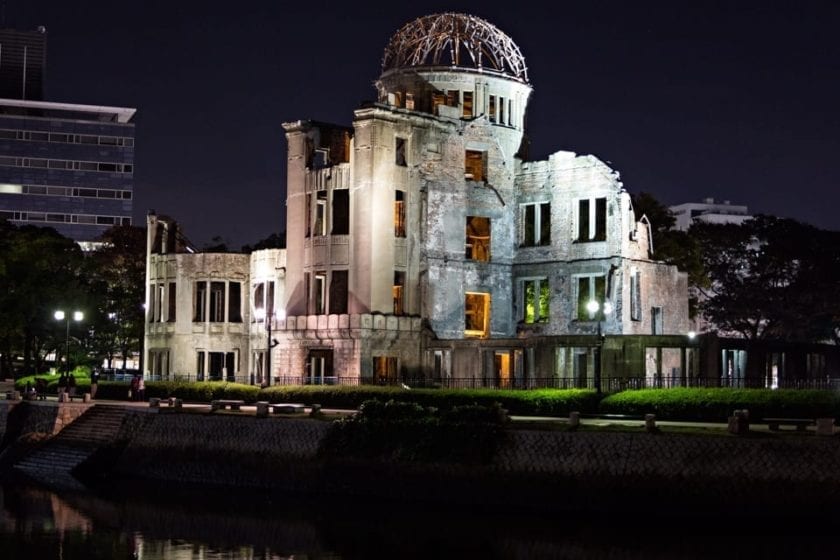
At a quick glance: 3 must-do’s in Hiroshima
Is it safe to visit Hiroshima?

When you hear “Hiroshima”, you probably rightfully think of the two atomic bombs that were dropped in Japan during World War II.
Yes, the first of the bombs – the first atomic bomb in the world, for that matter – called “Little Guy” was dropped over Hiroshima on the morning of August 6th, 1945. The second one, “Fat Man”, was dropped on Nagasaki on August 9th of the same year.
But even though there was an atomic bomb that destroyed over 69% of Hiroshima’s buildings and killed over 30% of Hiroshima’s population, yes, it’s completely safe to visit now. Hiroshima has gone back to being a normal, safe city to live in.
The radiation levels in Hiroshima are on par with the normal radiation levels anywhere else in the world. The residual radiation from an atomic bomb declines very rapidly and since it’s been more than 7 decades, it’s been a long time that the levels have been in norm.
How much time to spend in Hiroshima?
As with any other place in the world – the more, the better!
But with Hiroshima, everything of popular interest is located quite close together. It means that you don’t have to spend a lot of time travelling from one spot to another.
My advice, though, would be to have full 24 hours in Hiroshima, that is, spend a night or even two there. That’s what we did during our 10 days in Japan, and it made for a nice and relaxing exploration of both Hiroshima and Miyajima. Plus, it gave us time to get over the jetlag and have a bit more of a relaxed time in the city and in Miyajima.
Related: Tips for planning your Japan vacation!
Can you do a Hiroshima day trip?
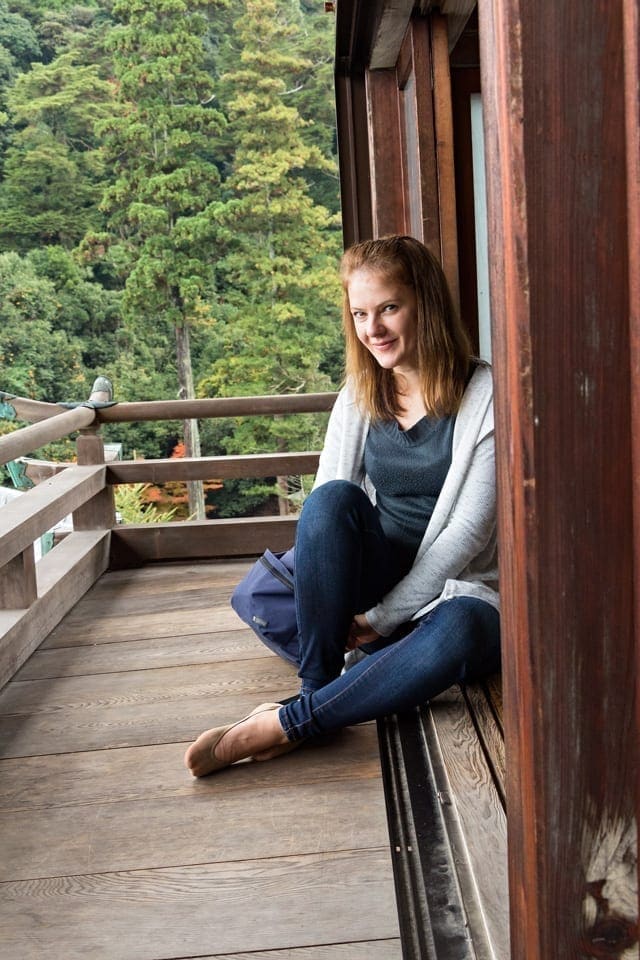
If you only have time for a day trip to Hiroshima, it’s completely ok. But not really from further than Kyoto or Osaka, though.
The Shinkansen from Kyoto or Osaka to Hiroshima takes approximately one and a half hours.
The Japan Rail Pass is definitely useful if you plan to travel around Japan or go on more day trips, as otherwise, the travelling cost could skyrocket. With the JR Pass, although the initial cost of it is not that small, altogether it’s great value and keeps the overall cost down.
Also, there are day trip guided tours available from Kyoto and Osaka.
Hiroshima day trip itinerary
So, let’s dive into what to see in Hiroshima for a day. Afterwards, I’ll mention all the rest of the stuff that you’d like to know – where and what to eat, where to stay, and how to get to Hiroshima from different places in Japan.
There are two Unesco World Heritage Sites in Hiroshima – the Itsukushima Shrine and the Atomic Bomb Dome. One day in Hiroshima is exactly enough time to visit them both.
As a note: it might be interesting to do the itinerary opposite, as in, you can explore Hiroshima in the morning and go to Miyajima in the afternoon. The Itsukushima Shrine is illuminated at night which looks gorgeous.
Morning of the day in Hiroshima – visit Miyajima and the Itsukushima Shrine.
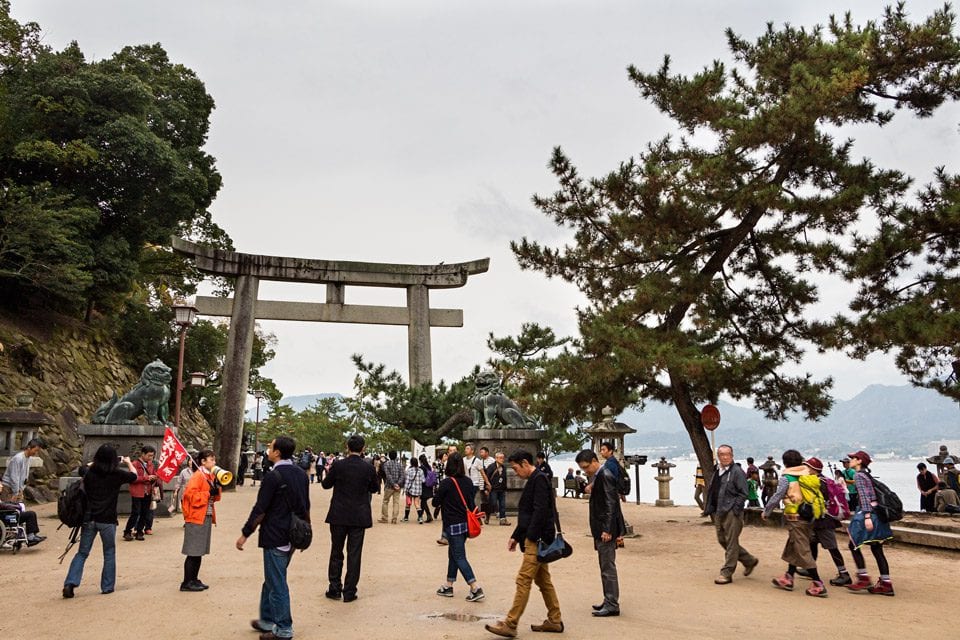
In the morning, visit the little dreamy island located close by Hiroshima in the Hiroshima Bay – Miyajima.
Miyajima island is believed to be the place where the God dwells. And the Itsukushima Shrine is built on the edge of the island over the water because the whole island is believed to be God’s body and thus sanctified.
When the tide is low, you can walk right next to the shrine and observe it from kind of bottom. But when the tide goes up, it seems like the shrine is floating on the water.
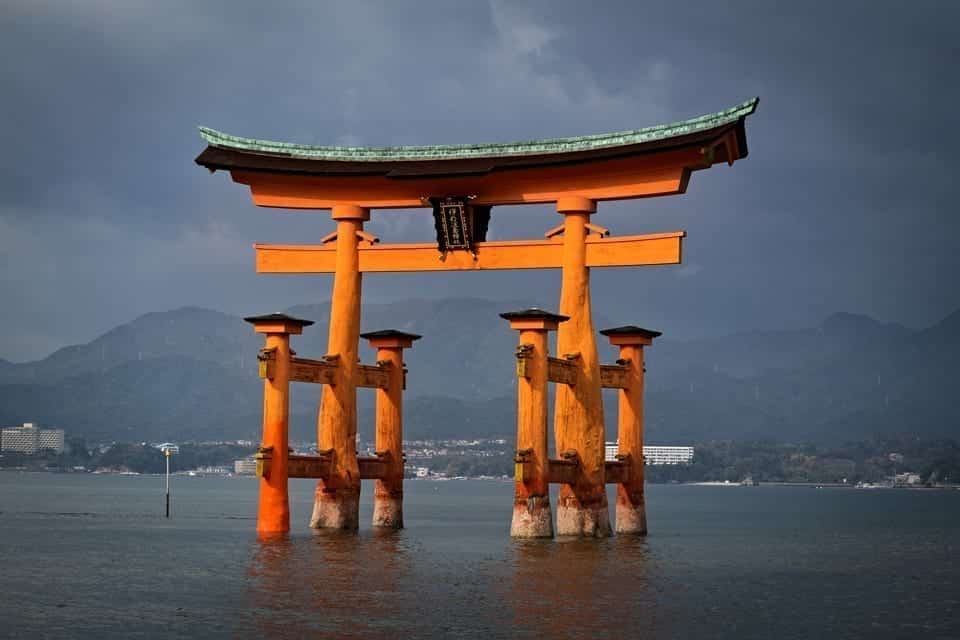
And make sure to check out the Itsukushima Torii gate. The view of the gate is rated as one of the three best views in Japan!
There are many temples on Miyajima, but since you only have one day in Hiroshima we suggest you go to the Daisho-in temple. It is one of the most important temples of Shingon Buddhism in the world. Among the many interesting buildings, statues and other religious objects are 500 Buddhist statues, a sand mandala created by visiting Tibetan monks, a cave filled with 88 icons representing the temples of the Shikoku Pilgrimage, and all of the temple rooms, of course.
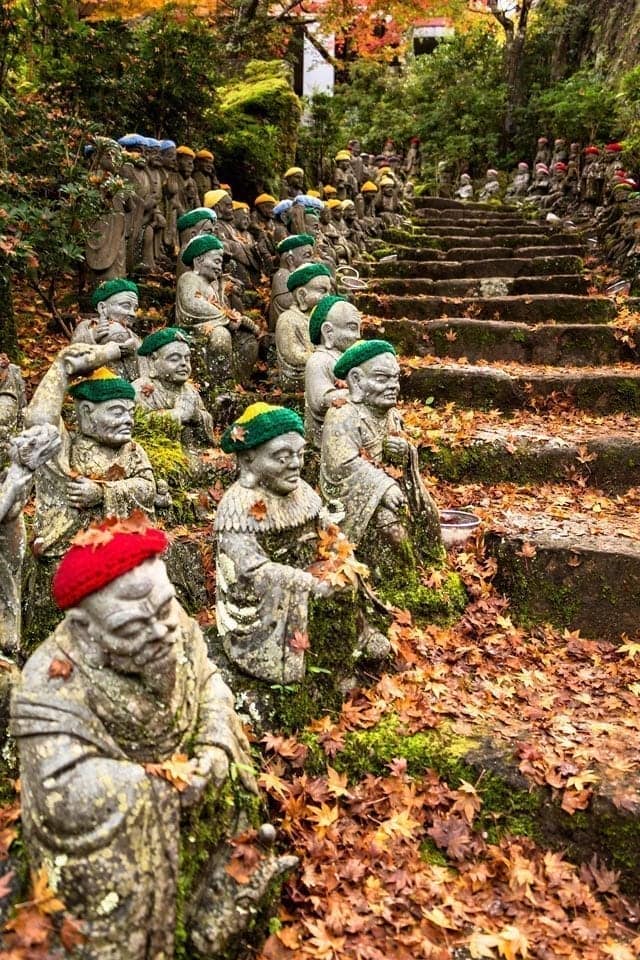
An interesting ritual can be performed when walking up the steps of the temple – spinning the metal wheels that are inscribed with sutra supposedly gives the same effect as reading them.
And, of course, roam the streets of the romantic Miyajima itself. The picturesque streets are full of tame deer that let you take a selfie with them. But be careful, as the deer like paper and have eaten more than one tourist passport!
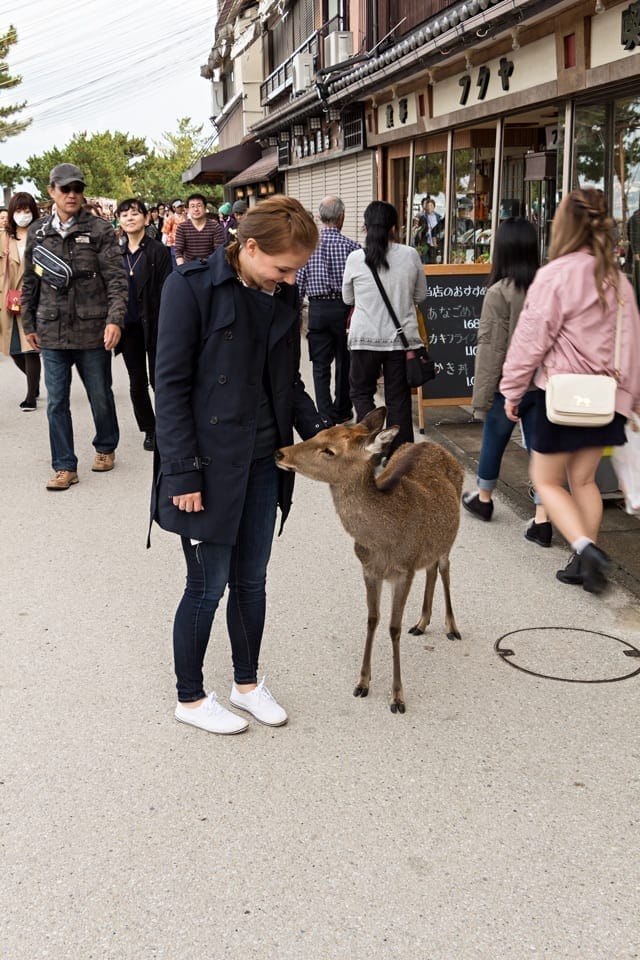
After having a refreshing matcha ice cream, go back to Hiroshima.
Afternoon of the day in Hiroshima – Atomic dome and Peace Memorial Park
Witness to one of the greatest tragedies in the history of humankind, today’s Hiroshima is a modern metropolis with a friendly and pleasant atmosphere.
All of the most interesting spots in Hiroshima are located quite closely together: the Atomic Dome, Peace Memorial Park, and Peace Memorial Museum.
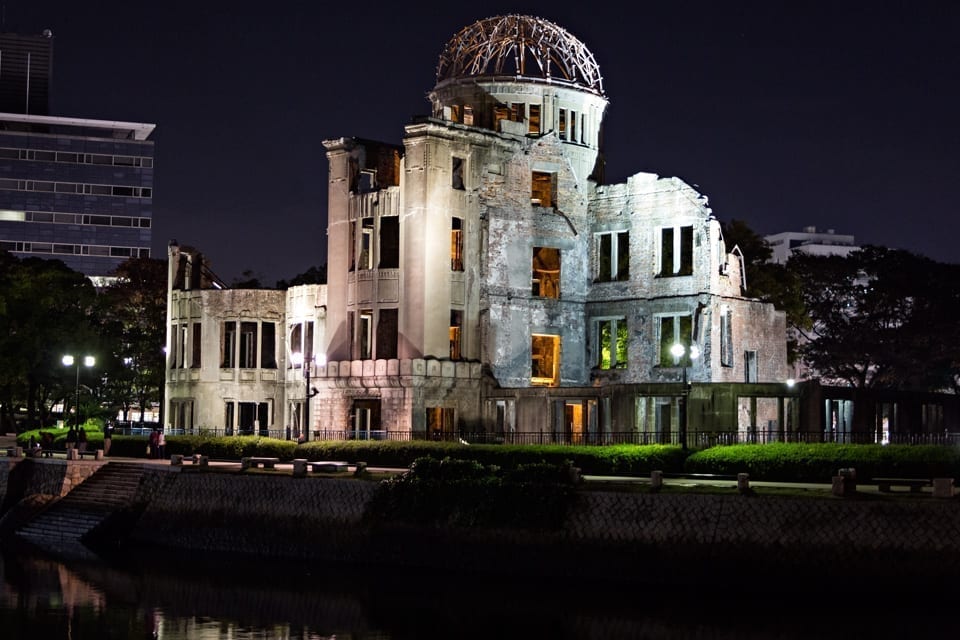
The Atomic Bomb Dome was located almost exactly under the explosion. Because the blast struck from almost directly above, some of the centre walls remained standing, leaving enough of the building and the iron frame to be recognizable as a dome. After the war, these dramatic remains came to be known as the A-bomb Dome.
If you wish to see the actual Ground Zero – the place above which the bomb exploded 600m in the air, it’s located opposite Shimasjukhuset, a medical clinic. There’s a small marble sign on the side of the road. It’s an approximately 5-minute walk from the Dome.
Walk through the Peace Memorial Park towards the Hiroshima Peace Memorial Museum.
On the way, you will pass by the Flame of Peace. This flame will remain lit while there are still atomic bombs in the world. The pedestal on which the flame is burning is made in a form of two hands pressed together with the palms facing the sky.
Let’s all hope that it will be extinguished soon, deal?
Next, you will reach the “Memorial Monument for Hiroshima, City of Peace” which is more commonly known as the Cenotaph for the Atomic Bomb victims. The names of all those who lost their lives are inscribed inside the central stone vault.
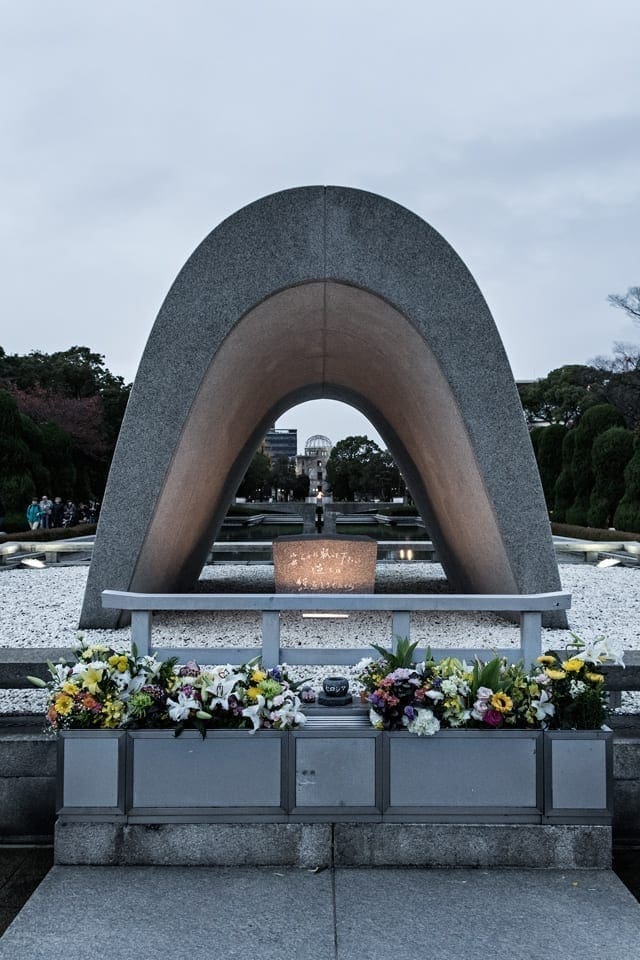
Next, the most heartbreaking part of the day in Hiroshima comes – the visit to the Peace Memorial Museum. It is quite an intense place, but the visit really gives you a perspective on what a disaster an atomic weapon can create. Definitely, don’t miss it.
Evening of the day in Hiroshima – Peace bell and the Children’s Peace Monument
After the museum, if you still have time, visit the Peace Bell and the Children’s Peace Monument which are both located in the Peace Memorial Park as well.
The Peace Bell was installed with the aim of abolishing nuclear weapons and bringing about world peace. There’s a world map without country borders on the surface, which symbolizes a unified world. Visitors are welcome to strike the bell while praying for world peace.

The Children’s Peace Monument is in honour of a girl named Sadako Sasaki and thousands of other children who died because of the atomic bombing of Hiroshima. Sadako was two when the bombing happened, and she died 10 years later from radiation-induced leukaemia. During the illness, she was folding paper cranes.
There’s a Japanese legend that says that the crane, a sacred bird in Japan, lives for a hundred years, and if a sick person folds 1000 paper cranes, then they would soon get well. After hearing the legend, Sadako decided to fold 1000 cranes and pray that she would get well again.
Sadako’s classmates formed a unity club, which grew to include children from other schools and even countries as well. With their help, a monument was made – the Children’s Peace Monument. Even now, children from all over the world still send folded paper cranes which are then placed next to Sadako’s statue.
It’s a very inspiring place. And I completely agree with the prayer that is engraved in the statue: This is our cry, This is our prayer, Peace in the world.
Getting around during this Hiroshima itinerary
Getting from Hiroshima to Miyajima and back is quite straightforward, especially if you’re close to the Hiroshima station.
And if you’re not spending a night in Hiroshima, it’s even easier since you’ll be arriving straight to the Hiroshima station. That means, just change your train and carry on!
Here you go, a detailed explanation of how to get around Hiroshima.
Getting from Hiroshima to Miyajima
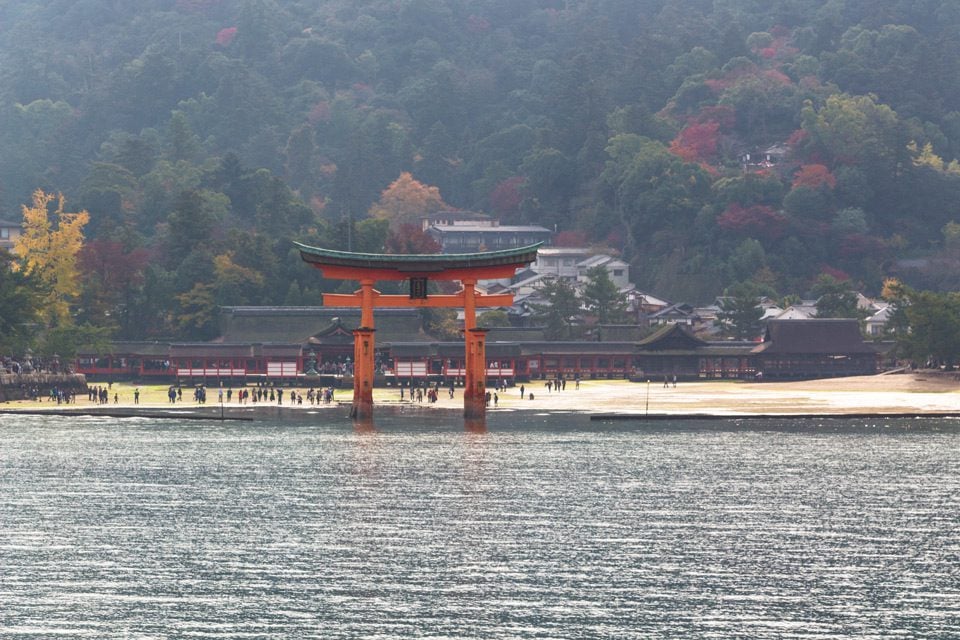
To get to Miyajima from Hiroshima, take a train from Hiroshima station to Miyajimaguchi.
It’s about a half-an-hour ride on a local train (JR Sanyo Line), departing from track 1 at Hiroshima station. The local trains are rather low-tech low-key (especially in comparison with Shinkansen), but still, they’re a safe, efficient and reliable means of transportation.
At Miyajimaguchi change for a short 10-minute ferry ride to Miyajima island. There are JR ferries as well as ferries operated by private companies. You can use your JR Pass for the JR ferry. And in case, you still don’t have your Japan Rail Pass, it’s the best time to get one.
Getting from Miyajima back to Hiroshima
You can get from Miyajima to Hiroshima city using the same transport as for getting to Miyajima. That is, take a ferry to Miyajimaguchi, then JR Sanyo Line train to Hiroshima station.
Alternatively, you can use tram number 2 running from the ferry stations to the centre of Hiroshima. It’s a bit slower than taking the train and as the JR Pass is not valid for the tram, you’d need to buy a ticket at the station. The advantage of taking the tram is that it brings you right to the centre where the Atomic Dome and Peace Memorial Park are.
Related: Japan 10 day itinerary which is perfect for first-timers
Getting to Hiroshima if you’re doing a one-day trip
If you’re doing a day trip to Hiroshima from either Kyoto or Osaka, this is how you can get there.
How to get from Tokyo to Hiroshima
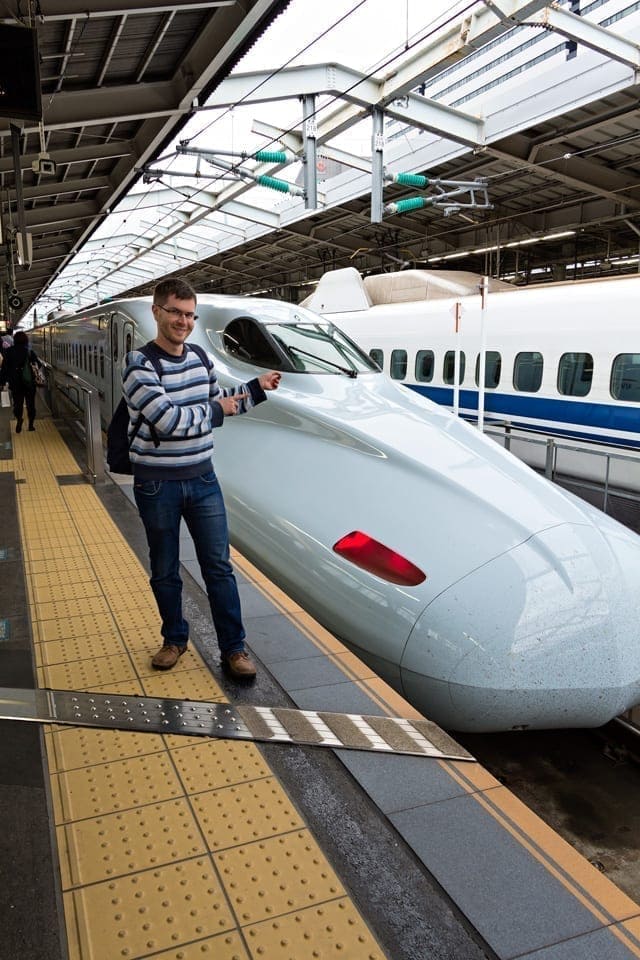
We don’t recommend doing a day trip from Tokyo to Hiroshima, as timewise it’s just not worth it. Getting from Tokyo to Hiroshima would take approximately 6 hours! So you’d have to spend almost the whole day on the road. Or fly, for that matter.
If you’ve arrived at Tokyo Narita airport and would like to start your Japan trip in Hiroshima, consider spending a night or two in Tokyo and only then positioning. You’re probably straight off a long-haul flight which is tiring enough without a 6h train journey in an unknown country.
But if you choose to go straight from Tokyo airport to Hiroshima, first take a JR-operated Narita express to Tokyo’s main station. There, you need to change for a Hikari Line Tokaido Shinkansen to Osaka or Kobe (stations called Shin-Osaka and Shin-Kobe), or Himeji and change there again for a Sakura Shinkansen (Sanyo) to Hiroshima.
How to get from Osaka to Hiroshima
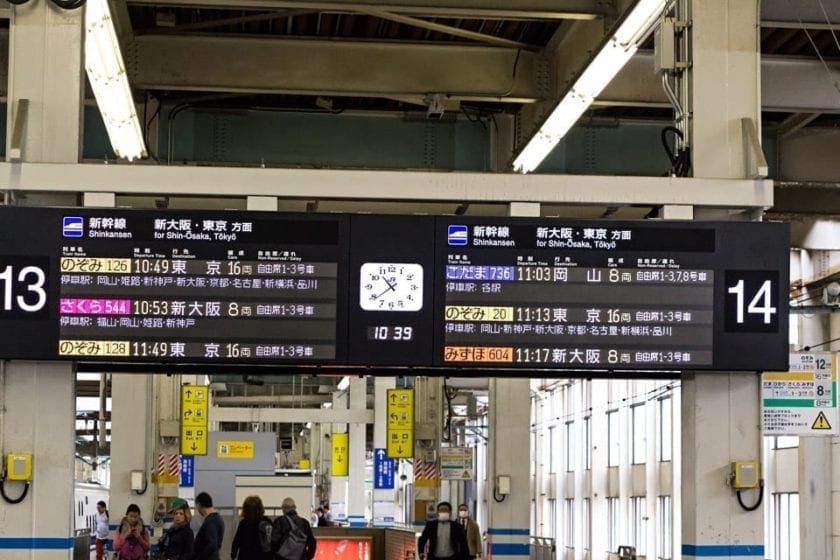
When we visited Japan, we arrived in Osaka and from there went straight to Hiroshima. Can’t exactly say that it was an easy journey – the flight from Europe was quite tiring. But still, it’s quite doable. Especially if you spend two nights in Hiroshima afterwards.
And anyway, it’s definitely worth it.
If you’re in Osaka and going to Hiroshima, it’s quite easy – just use the Sanyo Shinkansen line.
The Sakura and Hikari trains take approximately an hour and a half to get from Osaka to Hiroshima. The Kodama trains take longer about 2 hours and a half, so I wouldn’t recommend them. JR Pass covers these trains – no problems there, just get on and go!
The Nozomi and Mizuho trains on the Sanyo Shinkansen Line are not yet covered by JR Pass, so I don’t recommend using them.
To get to Hiroshima from Osaka, we recommend you to join a day tour or go by a JR train.
Related: All you need to know about travelling around Japan with a train
How to get from Kyoto to Hiroshima
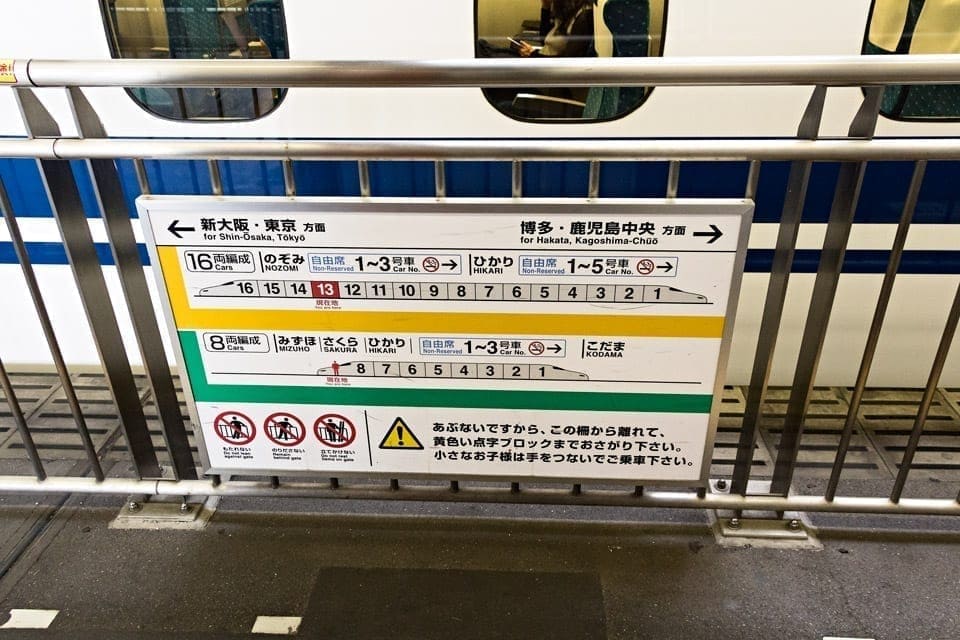
Kyoto and Hiroshima are connected by the Sanyo and Tokkaido Shinkansen lines.
If you take a Hikari or Sakura Shinkansen train, you may have to make a transfer at Shin-Osaka or Shin-Kobe Station. It’s really nothing bad and adds only approximately 15 minutes to the journey.
Anyways, the journey time is pretty similar. I checked Hyperdia, which is your best friend for planning train journeys in Japan, and it was showing times in-between 1hour 44 minutes and 2 hours 10 minutes for Shinkansen from Kyoto to Hiroshima.
Just like from Osaka, to explore Hiroshima from Kyoto, either join a day tour or go by a JR train.
What and where to eat in Hiroshima?
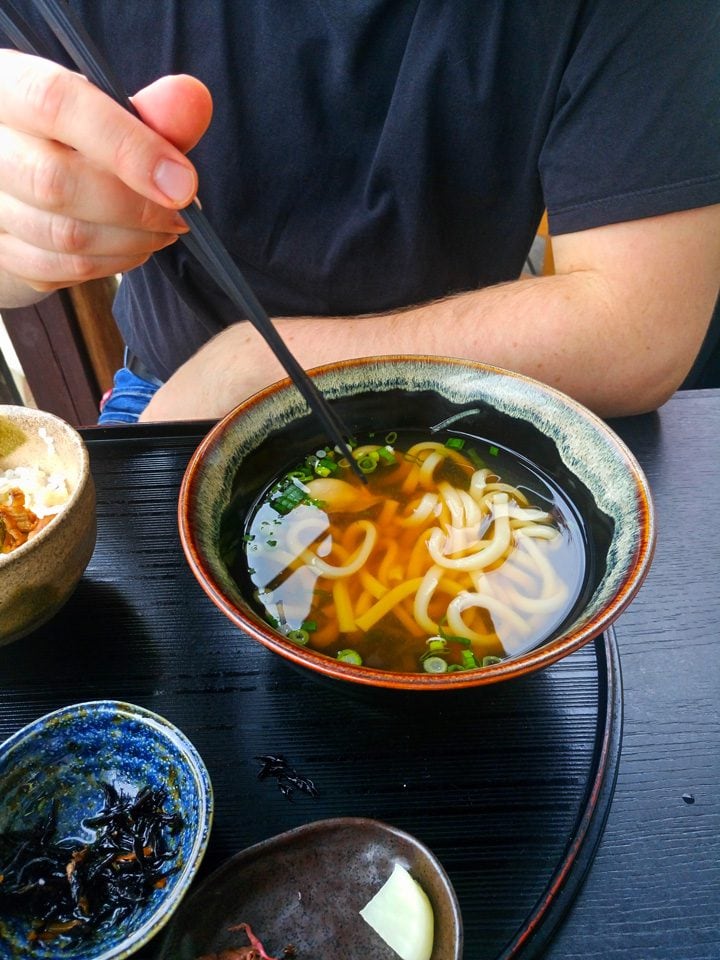
Well, wherever you go in Japan, you can be quite sure that the food will be tasty. The Japanese pride themselves on quality and perfectionism, so you don’t have to be afraid of eating a supermarket meal or food from vending machines. It’s all going to be perfectly fine.
As for what would be the must-try meal in Hiroshima, it’s definitely okonomiyaki – or Hiroshimiyaki, which is Hiroshima-style okonomiyaki.
This type of Japanese food is insanely popular in the area – the city has over 2000 okonomiyaki restaurants, and the prefecture has more of those restaurants per capita than any other place in Japan, Wikipedia states.
So, definitely try it – should be easy to find, haha. Or if you have enough time, visit Okonomi-mura – it’s a Hiroshimiyaki theme park with 25 restaurants serving varieties of okonomiyaki.
When in Miyajima, be sure to try out local Hiroshima oysters in one of the many shops selling them. They’re incredible. And one of the best places to try the local oysters is in Miyajima – a place called Yakigaki no Hayashi.
Another local treat to try is Momiji-Manju – a pastry shaped like a maple leaf and filled with – traditionally – red bean paste, or pretty much any other filling, like matcha, chocolate, and others. You can try it in any local pastry shop.
If you’re spending a night in Hiroshima, you can consider going on a hike-yoga-tea ceremony sunrise tour which seems very unique. Or an authentic tea ceremony while wearing a kimono experience. Honestly, there seem to be quite a few interesting tours and activities available in Hiroshima, if that’s your thing.
Don’t be afraid to try the restaurants in the Hiroshima station itself. As I said before, the food in Japan is pretty much always high quality, so the usual “ugh, station food, what can be worse” doesn’t apply in this country.
Where to stay in Hiroshima?
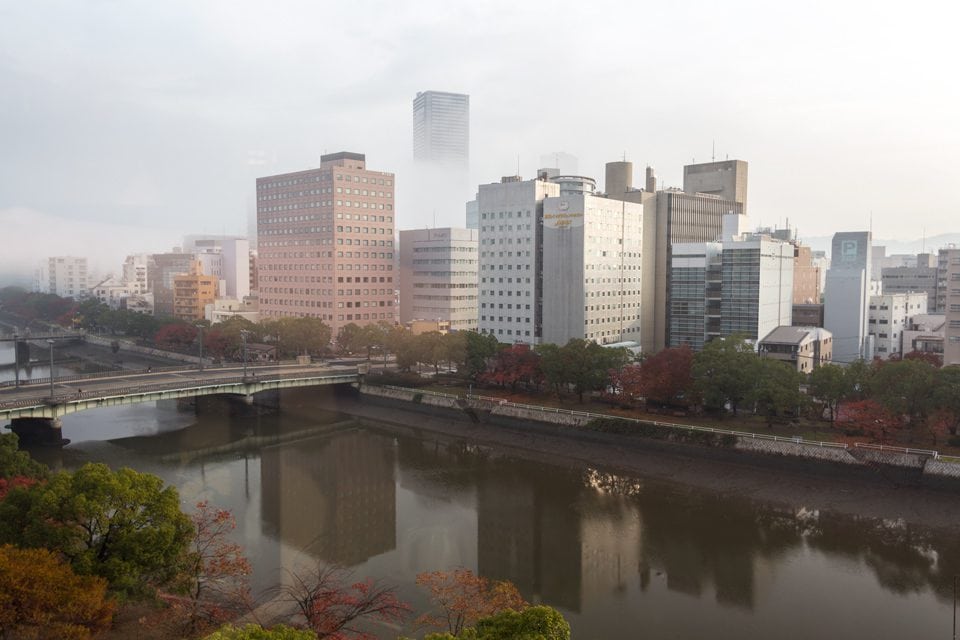
Well. It’s always hard to figure where to accommodate when planning a trip. So, depending on your budget, we prepared a list of accommodations, which might suit you best.
Best places to stay in Hiroshima are: Budget: EN Hotel Hiroshima or Nest Hotel Hiroshima Hatchobori; Mid-range: Hotel Granvia Hiroshima Luxury: Sheraton Grand Hiroshima Hotel; Ryokan: Kinsuikan, 4*, luxury ryokan in Miyajima
Both Hiroshima and Miyajima are good places to stay if you wish to spend a couple of nights in the area.
Miyajima has an abundance of great ryokans. The hotels there might be a bit more expensive than the ones in Hiroshima, true. But staying in Miyajima gives you an excellent chance to enjoy it after all the day’s crowds are gone. Or, well, most of the crowds.
Search for hotels in Miyajima on booking.com
As for Hiroshima, we recommend staying somewhere in-between or in the Hiroshima station and Downtown Hiroshima areas. Those are the most convenient locations to walk everywhere since most of the spots of interest in Hiroshima are located closely together in the centre.
We personally stayed in the EN hotel Hiroshima and were completely fine with the experience. The hotel is located 15 minutes walk from the Hiroshima station and 20 minutes from the Peace Memorial Park, so a rather good location. Plus, there’s a view of the Kyobashi River in at least some of the rooms, which is rather nice. You can check our accommodation at Booking.com for yourself too!
Search for hotels in Hiroshima on booking.com
What are some other things to do in Hiroshima and Miyajima?
If you have extra time, there are some other cool things you can add to your Hiroshima itinerary. I really loved our 24 hours in Hiroshima, but I wish we had managed some of these as well.
Hike mount Misen
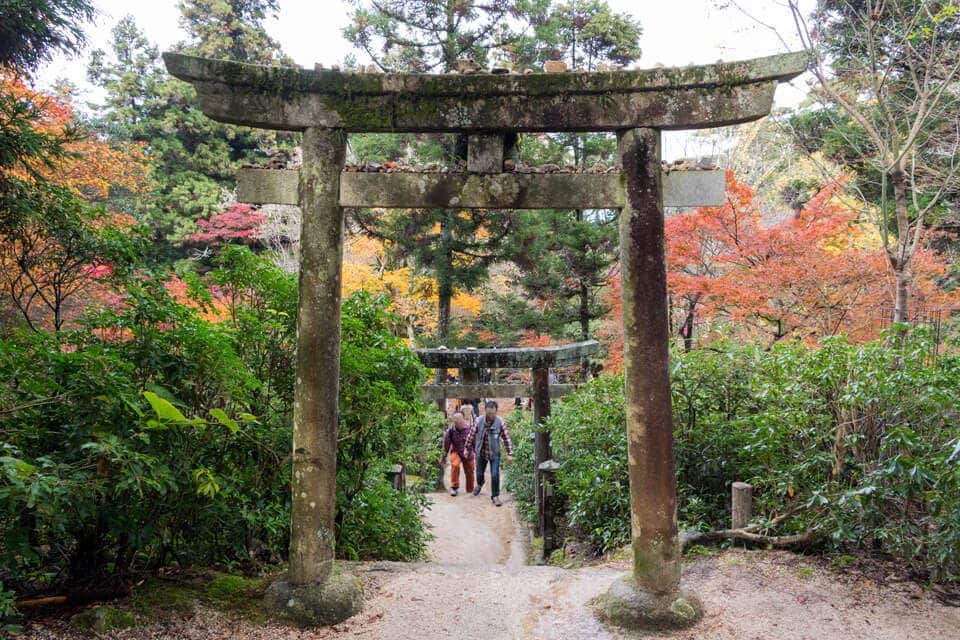
Mount Misen on Miyajima is considered a sacred mountain by the followers of the Sangaku-Shinko faith, which worships mountains.
There are three trails that go up and down the mountain: the Momijidani, the Daisho-in, and the Omoto Course. All of them take approximately 1,5 to 2 hours to hike. Even if you take the Hiroshima ropeway to get higher, there’s quite a lot of walking left to do.
It’s not the hardest hike but it is not really possible while on a day trip to Hiroshima. But, if you have half a day to spare, the 500msl peak offers nice views of the Seto Inland Sea and on clear days even of Hiroshima.
During the hike, you can sometimes meet deer so keep your passports safe!
In case, you prefer to use the Miyajima Ropeway, you definitely could! Just remember, the opening hours are from 9 am to 4 pm, and it costs 1100 yen per one way, and 2000 for the return journey.
Hiroshima Castle
Hiroshima castle is also known as the “Carp Castle”. It’s because the area around it was known as the Carp Sea Shore a long time ago.
Originally the castle was built in the late 1500s, but a replica had to be made because the original was destroyed during the atomic bombing.
Inside the castle is a museum on Hiroshima’s and the castle’s history and Japanese castles in general. From the top floors, you can enjoy panoramic views of the surrounding city.
Also, the entrance fee doesn’t cost that much. You should pay just 370 YEN for an adult person, and 180 YEN if you are a student or senior. I mean, if I could, I would definitely go. The opening hours are in top season from 9 am to 6 pm. In case, you travel from December to February, it’s closing at 5 pm. The last entrances are 30 minutes before closing hours.
Okonomi-mura
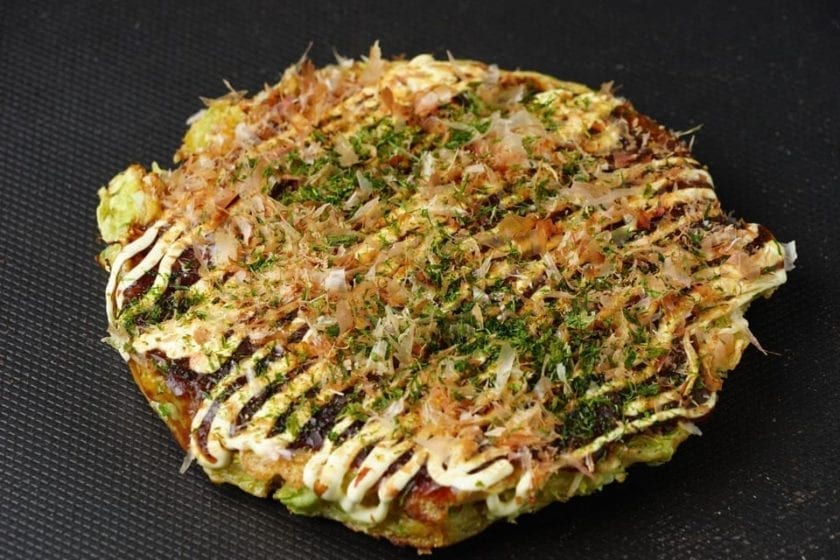
I already mentioned this before, but I’d like to explain more about the Okonomi-mura which translates to “Okonomi village”. The name itself says that there are a bunch of places where to eat okonomiyaki there!
This place has been a locals’ favourite for more than 40 years now. If you want to try okonomiyaki but don’t know which variety would be the best, Okonomi-mura is the place to visit. Quite a good place to have lunch on your Hiroshima day trip!
Shukkeien garden
A beautiful Japanese garden that is more than 400 years old and is the oldest in Hiroshima.
It’s been designated as a National Place of Scenic Beauty in Japan and for a good reason. There’s a pond with small islands in the middle with a bridge crossing in the middle. The walkway around the pond takes you through many small “sceneries” – the whole park is made out of miniature landscapes.
As usual the entrance fee is not so dramatic. If you are an adult, the entrance fee is 260 YEN, but you can apply for a student (150 or 100 YEN, depending on the level of your study), seniors above 65 years can go inside for free. Opening hours are:
| March 16th – September 15th | 9:00 – 18:00 (Entry until 17:30) |
| September 16th – March 15th | 9:00 – 17:00 (Entry until 16:30) |
The Hill of Hope
Within Hiroshima’s Kosanji Temple complex lies the Hill of Hope, also known as Miraishin No Oka, which is a marble garden, that can not be seen anywhere else in Japan. The Hill of Hope was designed by Japan’s sculptor and built from marble imported from Italy, so in a moment you will feel that you just escaped Japan for Italy!
The Hill of Hope consists of marble sculptures, towers, staircases, and even a cafe! You will definitely enjoy many spots to relax, or just to see Kosanji Temple down below. What a shame, we didn’t make it!
Related: What you should pack to Japan
Last thoughts about our one-day trip to Hiroshima itinerary
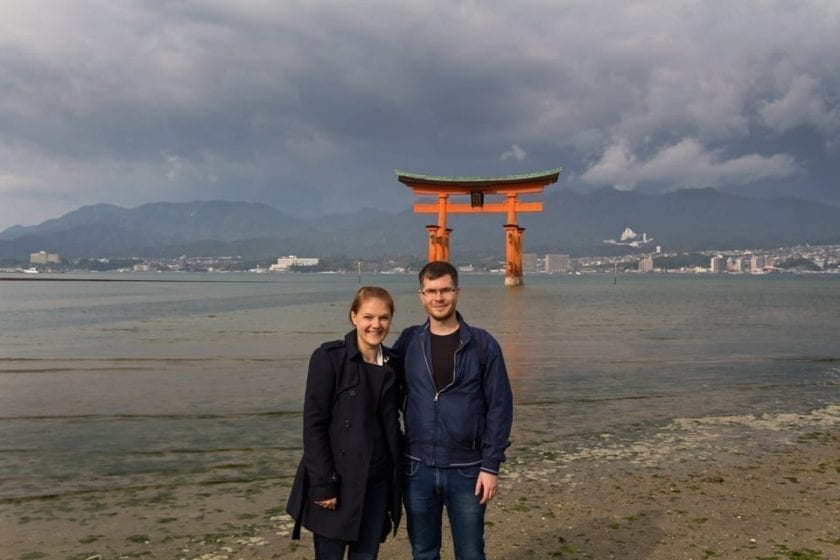
Witness to one of the greatest tragedies in the history of humankind, today’s Hiroshima is a modern metropolis with a friendly and pleasant atmosphere.
While the solemnity of the Peace Memorial Park and Museum and the frightening skeleton of the Atomic Bomb Dome will be in sharp contrast to the romance of Miyajima, this place doesn’t want you to leave depressed.
Rather the opposite – learn from past mistakes, do not blame, do not seek vengeance, and stay optimistic for a better future without nuclear weapons.
Whether you do a day trip from Kyoto to Hiroshima or stay there for some time, Hiroshima is definitely a place worth visiting.
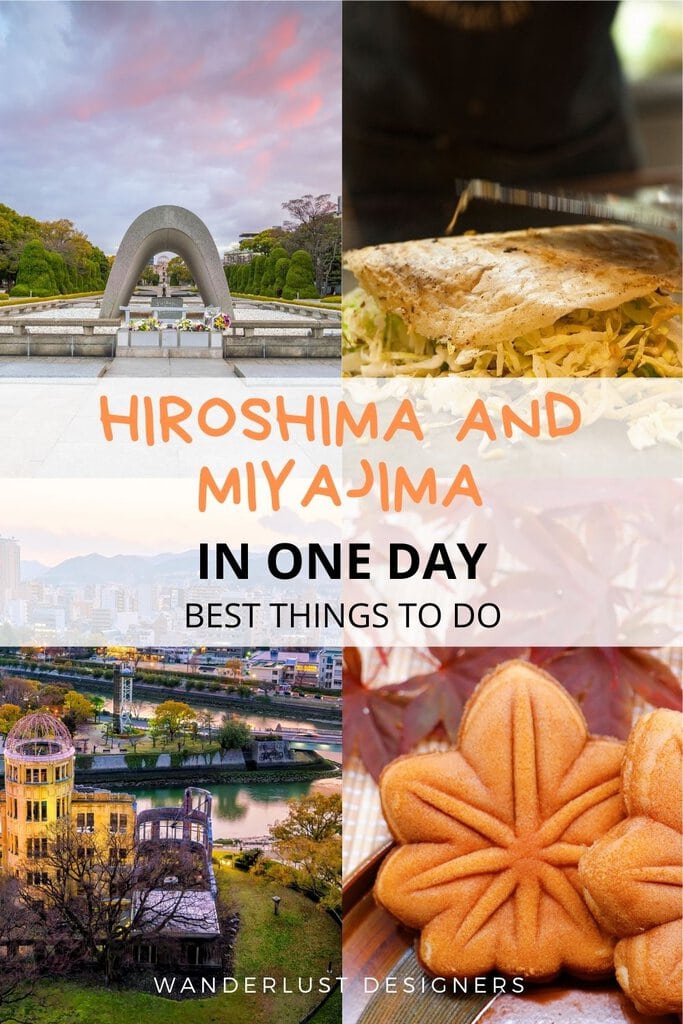
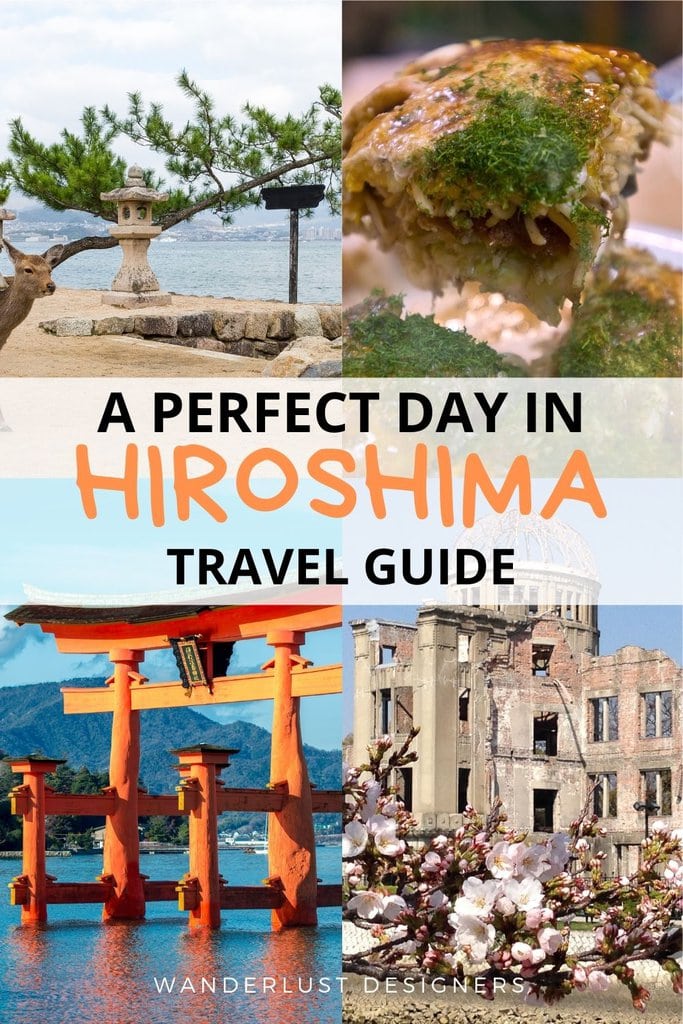

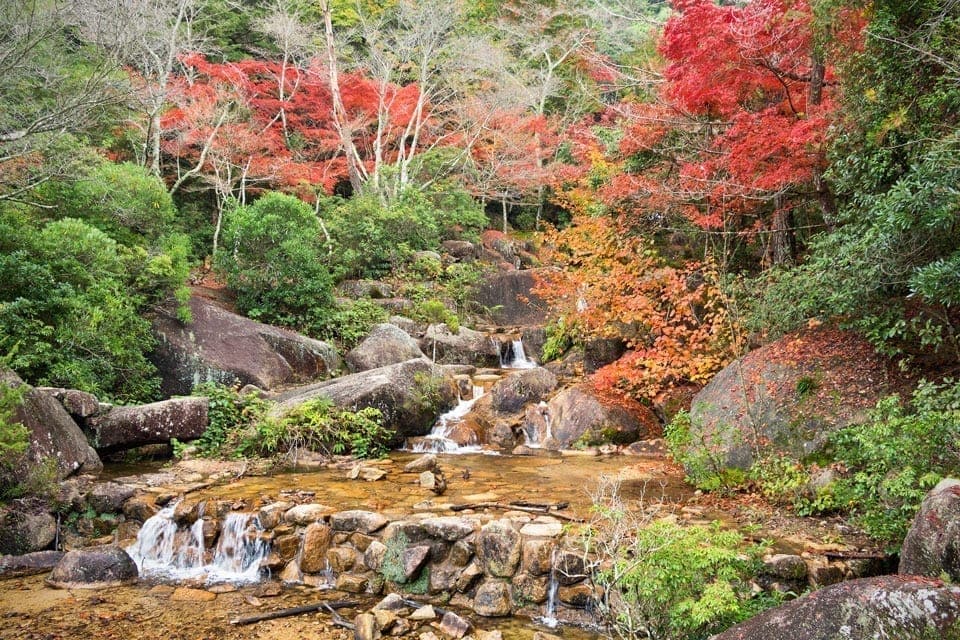






Hi Kristine, my wife and are planning a day trip to Hiroshima in a couple of weeks. In my research I came across your article on how to spend a day in Hiroshima. I found your summary very informative. You have give me some good advice. It helps me to plan my itinerary. Your message about the past tragedy and going forward was profound. I totally agree.
All the best!
Kee (from New Zealand)
Hi Kee,
I’m so happy you found the article helpful!
Enjoy your trip!